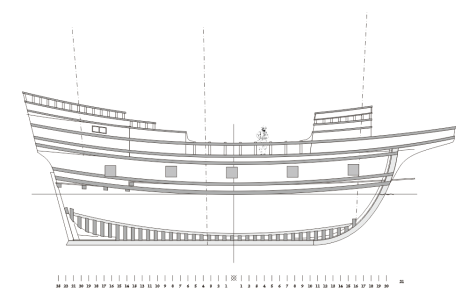- Joined
- May 13, 2019
- Messages
- 72
- Points
- 113

As I mentioned earlier, I am currently focusing more on drafting ship plans. Right now, I am working on Sir Francis Drake's fleet, specifically the Elizabeth, the second-largest ship of his circumnavigation expedition.Great start. Don't worry about slow progress. We often get mental blocks as to what to do next, or family life takes all our time, leaving little time for modeling. Ships like this take months to years to complete. Keep photo of your journey because they are fun to look at when the model is finished.


